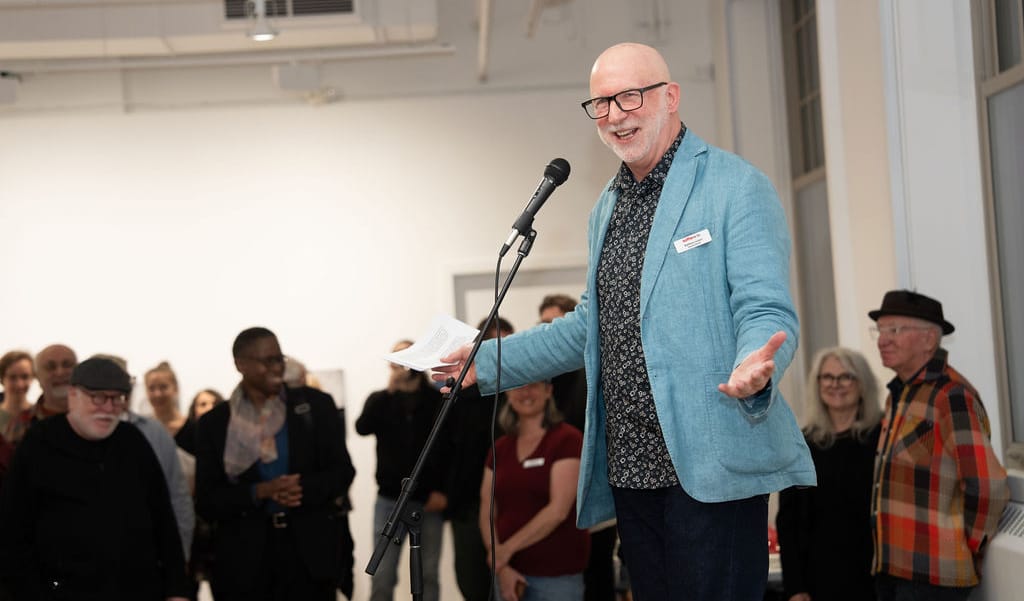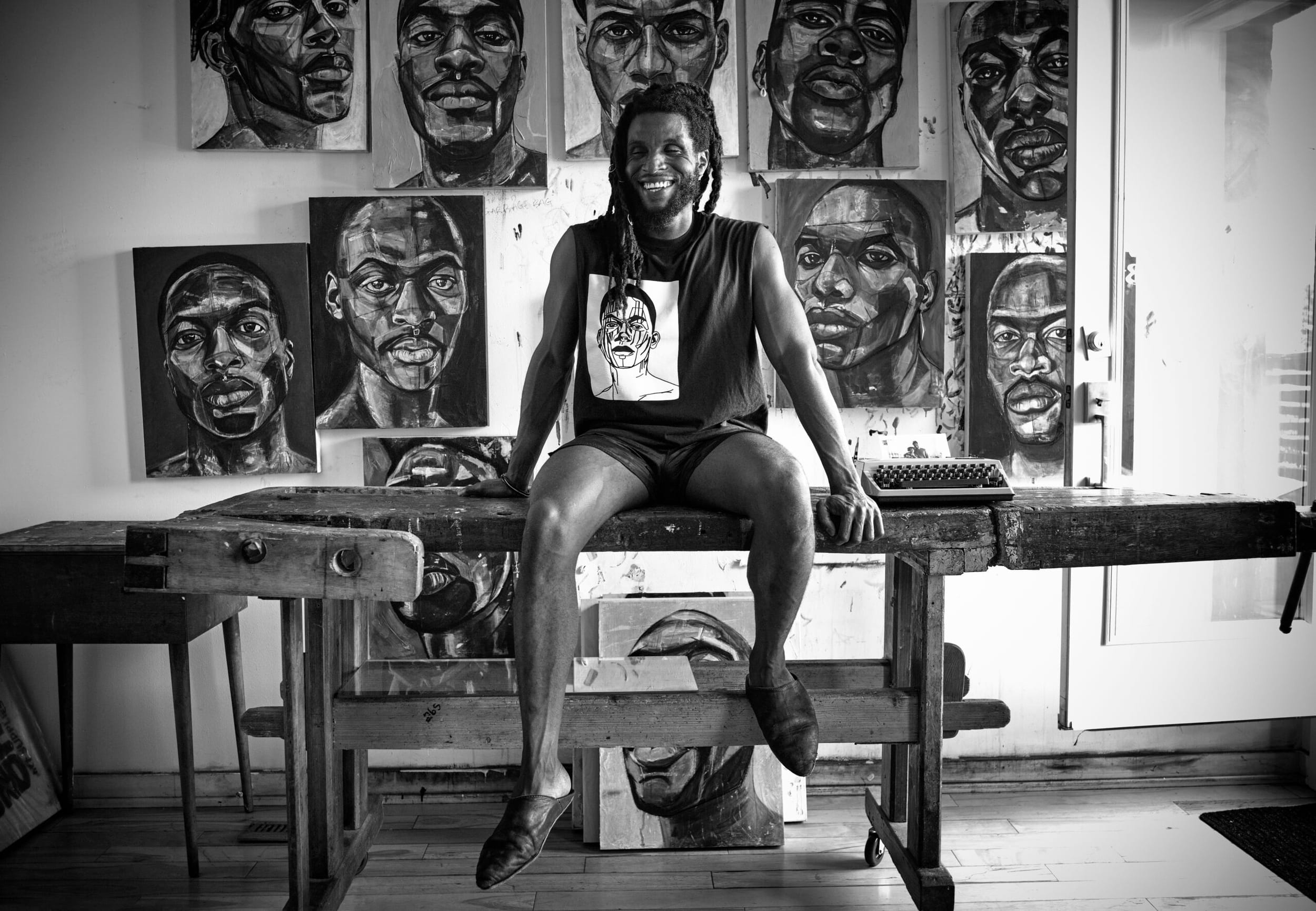Claiming Space—10 Years of Grassroots Artmaking at Youngplace
Another DECADE, the multi-artist show now on at Koffler Arts, shifts the spotlight onto the many arts organizations that call the Youngplace hub on Shaw Street home.
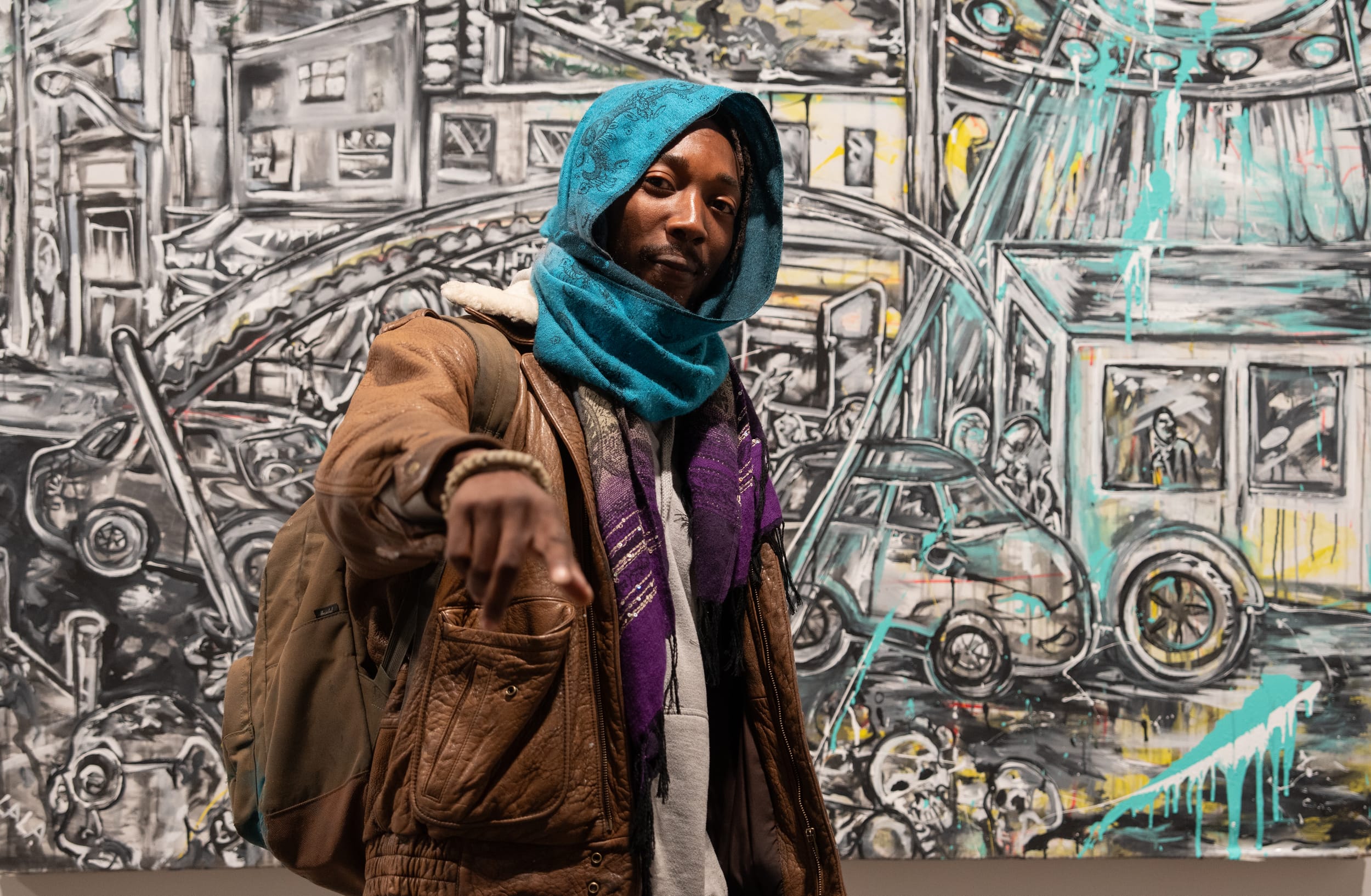
Earlier this year, the exhibition DECADE celebrated the tenth anniversary of the conversion of Youngplace from shuttered public school into artmaking hub, by featuring the works of artists with studios in the building. The show came at a time of uncertainty for the many creators and organizations who call the building home, including Koffler Arts. Only months before, the building’s owner and operator, Artscape, had filed for bankruptcy protection, throwing the viability of its affordable workspaces into doubt.
With Another DECADE, the exhibition’s second part, curator David Liss turns his attention to the building’s arts organizations and the work they do that is critical to grassroots artmaking in Toronto. From SKETCH Working Arts, which supports Queer, Trans, Black, Indigenous, and other racialized young artists, pieces by Renaissance, Lala J, and Nile X are featured. So too are video works created by the members of Intergalactic Arts Collective, a group of movement-based artists who explore ideas around community and resource-sharing.
As an artist, curator, gallerist, and consultant, Flavio Belli has been a fixture of the Toronto arts scene since the 1960s. Another DECADE includes works by Belli and two of the artists he’s represented as a commercial dealer—Toronto painter Zach Atticus and the late street artist Richard Hambleton (aka Shadowman). Finally, there are contributions from autistic poet and filmmaker Adam Wolfond, co-director of dis assembly, a lab for neurodiverse artistic experimentation.
Arcade recently spoke with five of the artists whose work is included in Another DECADE about their artmaking practice, the critical role played by grassroots arts organizations in the city, and how cultural policy might change to better support artists.
On Thursday, December 5, Koffler Arts is hosting a guided tour of Another DECADE led by curator David Liss. (Reserve a spot on the tour here.) The exhibition runs at Koffler Arts until December 15.
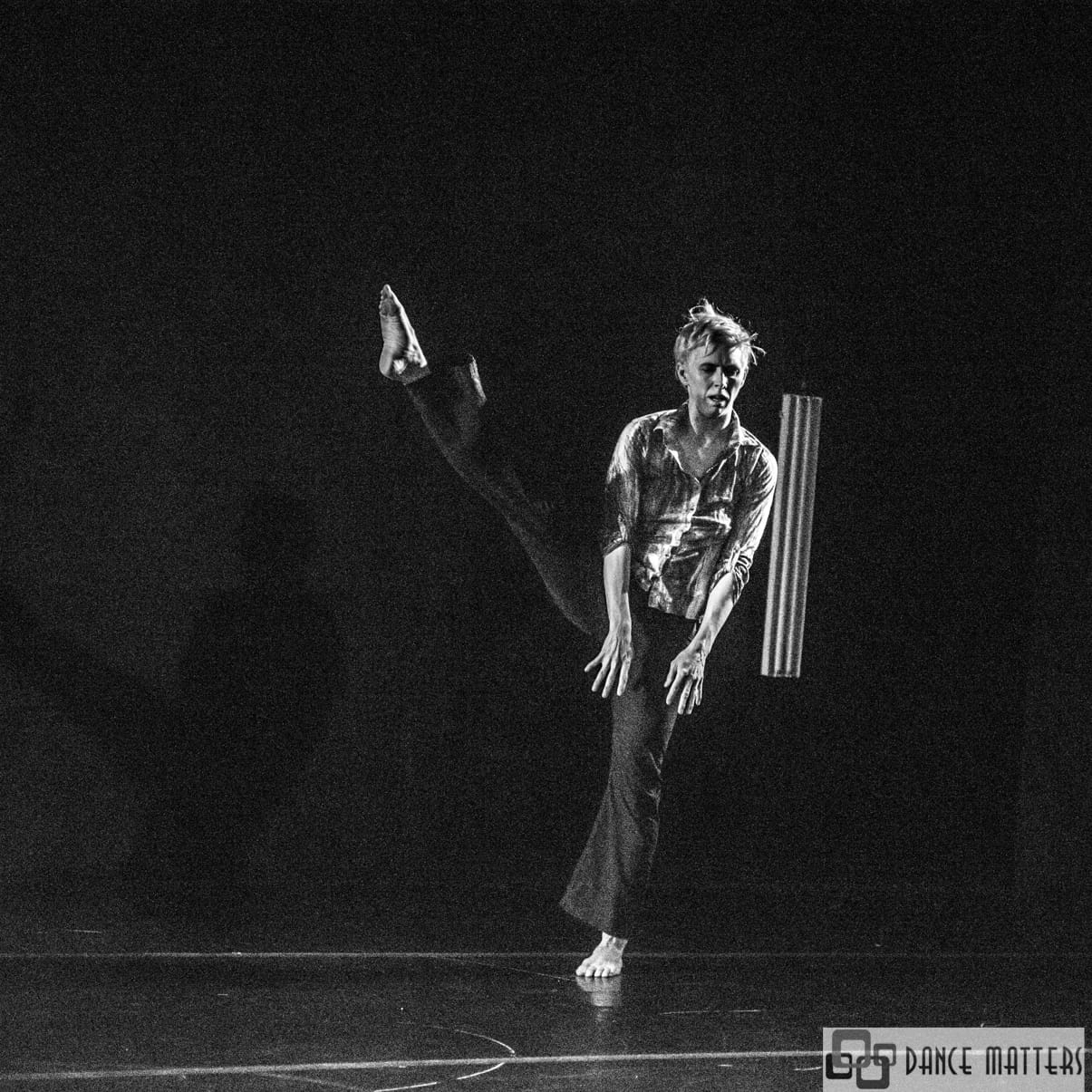
Sara Porter
Dancer, Intergalactic Arts Collective
What can you tell us about Getting to Know Your Fruit: Extracts, the work of yours that’s featured in Another DECADE?
It’s extracts from a larger show that has had various iterations over the years. What I did was take the opportunity to re-edit, reconfigure, reconsider what would only six minutes of Getting to Know Your Fruit look like? What are the essential pieces that need to be there? What I’m presenting at Koffler is a mix of things from the stage show and the film that was created for the Fall for Dance North festival. It’s a mix of self-portraiture, a monologue about memoir, with a solo in front of a chalkboard that is an improvised couple of minutes with me and a piece of chalk doing the mathematical construction of a banana. The whole creative project is an investigation of memoir, using fruit as a metaphor for who we are. Our tender bodies are fruits of the earth.
How has IGAC supported your practice? And how are organizations like it crucial to art making in Toronto?
There are not very many organizations like it in Toronto. We are unique in that we’re six artists who work together on a consensus model. We go through our bumps, but we are very successful in managing that space. We’ve been so fortunate to have had 10 years of rehearsal space that we share and negotiate among each other. I’ve created work there, presented my shows there, generally as a first step toward larger presentations, and taught my memoir and movement work, and my queer ballet classes. I don’t think I would have been able to do the work I’ve done without that space and that group of people.
It’s becoming harder to make art in Toronto, given issues of affordability, funding and other factors. How could the cultural policy change to better support artists in the city?
When we encounter artists, we encounter new ideas and creative practices that we don’t necessarily come up with ourselves. Artists are like the professional imaginers of society, and so in terms of cultural policy I think of it as the way in which the government and bureaucracy enact the values of a culture. Arts education in school is vital so that children learn they can grow in arts and mature in the arts, and that arts aren’t considered something only for children or as just a pastime. It’s vital to keeping our imaginations robust, alive, and valuable because imagination is how we solve any problem we encounter.
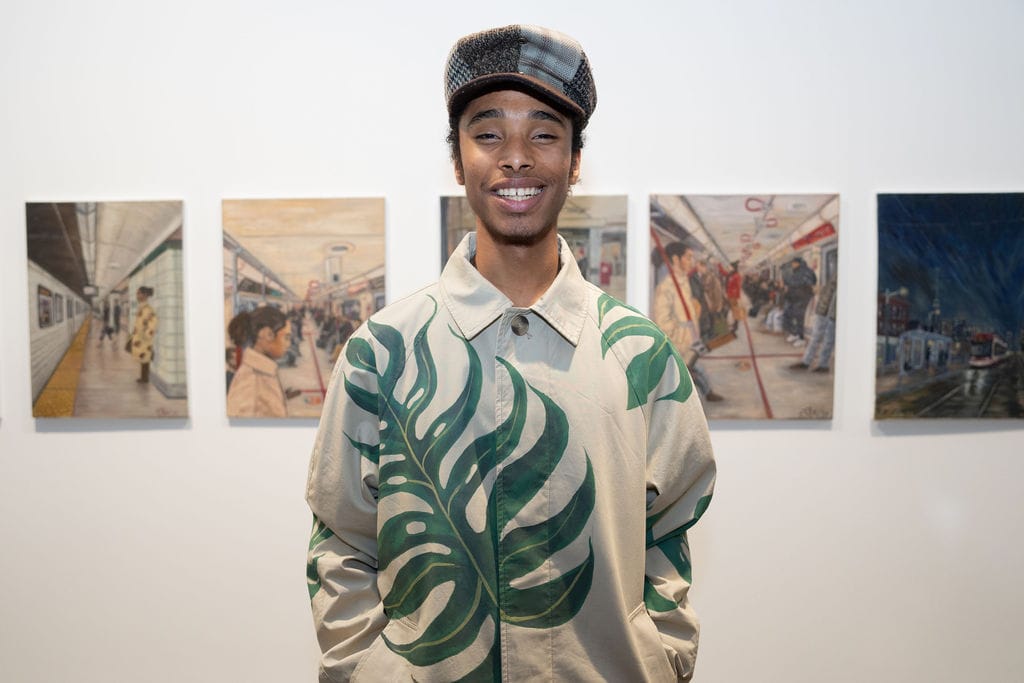
Nile X
Artist, SKETCH Working Arts
What excites you about the city of Toronto, and what subjects most interest you?
There’s a lot of things going on in the city and not everything’s going to be appealing, but the subjects that interest me are what I and a lot of people experience every day. It’s their everyday part of life that excites me. People ask me, “Oh, my goodness, can I be in your painting?” I see myself being here. In the subway, there’s people walking in, people walking out, people bringing all types of things, and to be able to capture that in a painting, it’s like a time capsule of that specific moment.
How are organizations like SKETCH Working Arts crucial to making art in Toronto?
When you go into SKETCH, you have a space where you can work and a lot of these paintings, especially the subway ones, were made with oil paints donated by random people to SKETCH. Aretha at SKETCH used to cook incredible meals. And as an artist, you need those meals to nourish yourself, to create the best work, and purchasing food is very expensive. If I really want to save money, I’ll go get a kids meal, but eating kids meals all the time it’s not a healthy alternative.
SKETCH is a place where artists can relate to and understand each other—people from similar backgrounds in that they don’t come from prominent families, or have a lot of money. SKETCH took away a lot of the stresses of being an artist. You have a place where someone is helping you.

Maxine Heppner
Dancer, Intergalactic Arts Collective
What was the thinking behind the film you’re presenting as part of Another DECADE?
The material for the film came from a spontaneous moment at 3 a.m., on June 20, 2020, which is the title of the piece. I was wide awake in the early morning hours, wandering around on a hot summer night and decided to film myself on my porch. The material had an immediacy because of the movement, the natural lights from the street, and the graininess of film’s resolution. That graininess somehow made it even more real than something constructed and clean and high definition, which we value a lot in film. Realizing this, I began to consider it as footage to be edited into a film.
And how do you see the work fitting into your broader practice?
I’m most interested in the immediacy of live performance. I’m driven by the proximity of people. Everything I do stems from the physicality of our existence in this universe, that we actually live in bodies and negotiate ourselves in this place. Whether I’m making dance work or a film, or even when I do my writing, it always stems from the reality that we are physical, material beings. The piece in the exhibit has a kind of immaterial quality to it, but the root of it is a real person.
In what ways has IGAC supported your practice?
We can’t make performing art without a place to practice. We can convene, we can discuss, we can dream, we can do many things just about anywhere, and we learned that during COVID-19, but we really need a physical space that is big enough, clean, and welcoming to dancers needs, to practice, to rehearse, to make it possible, otherwise it’s only ideas.
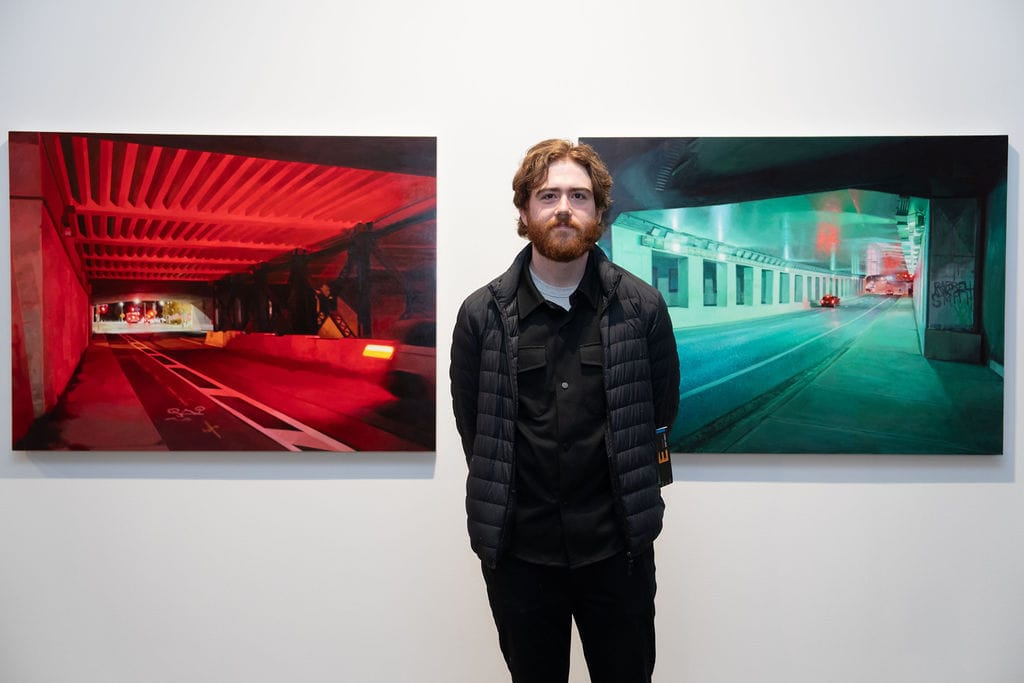
Zach Atticus
Artist, represented by Flavio Belli
What can you tell us about your paintings that have been included in the show?
The centrepiece for this show are the two tunnel paintings, Convergence and Lacrismosa. Like the majority of my work, these pieces focus on my perspective and journey in the city. I paint still and isolated moments in which the viewer can have a moment alone to themselves for once. With my hyper-pigmented palettes and focus on lighting, my intention is to elicit a more than real, nostalgic feeling that taps into the lived experience of those places.
What attracts you to your subjects?
The direction my paintings would take was affirmed to me in 2020, during the pandemic’s stay-at-home orders. We were told to stay at home as much as possible but I continued to take my walks at night. I’ve always been very introverted and these walks were a time for me to feel safe and free of anxiety. But during the lockdowns there was an alarming and eerie silence. To depict this feeling I used a strongly red and orange palette, and was able to use lighting to flood scenes entirely. A scene that was usually peaceful was given a foreboding intensity. I try to continue a subtle level of ambivalence throughout my work. While I do paint simple subject matter and daily experiences, I hope it is a subtlety of mood that carries my work.
How could cultural policy change to better support artists in Toronto?
During my time as an artist in Toronto, I’ve seen many friends evicted from affordable living spaces, studios, and live-in studio spaces. These have all been torn down to make way for overpriced condos, many of which remain empty. Seeing this happen to my friends while hearing newcomers to the city ask me, “Where is the art” or “Where is the culture,” is a hard thing to bear.
In the future, when the condos fill up, I fear the culture that had attracted those people to Toronto will have disappeared to make room for them. We need better city planning to create walkable areas with cultural hubs, and we need them not only in the downtown core but in more areas of Toronto to enforce community identity. If we don’t protect and foster the cultural identity of the city, people may move here but find themselves without a home.
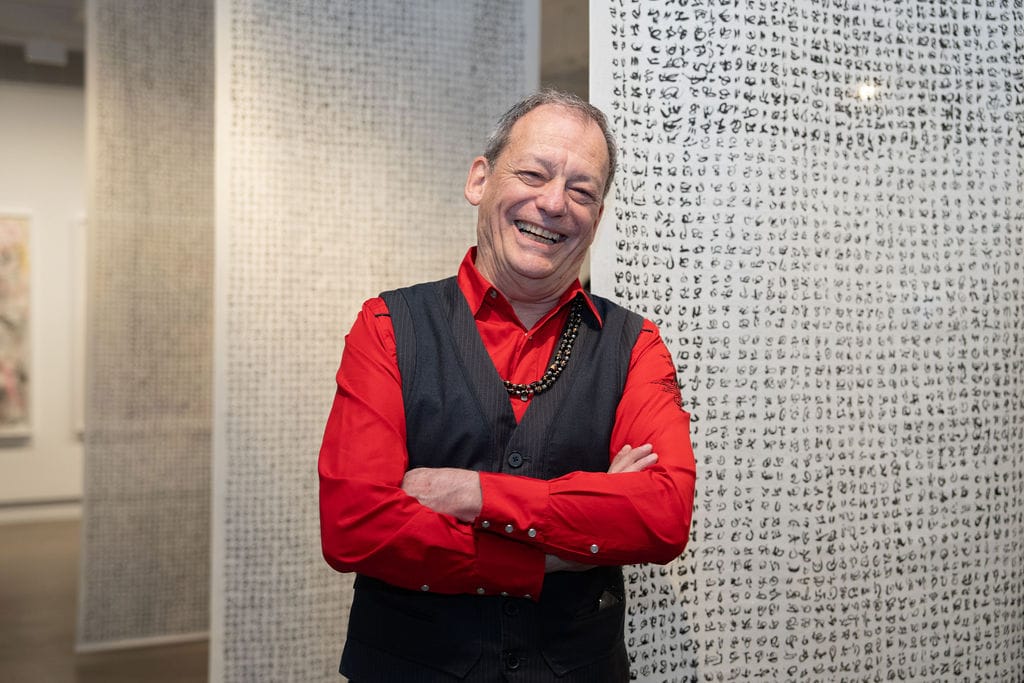
Flavio Belli
Artist and gallerist
What can you tell us about your work Mountains?
Mountains is composed of approximately 2,500 1-inch square pieces of cut-up Paint by Number paintings. It should be noted that Paint by Number paintings are not art. In the 1970s, I purchased hundreds of Paint by Number paintings from junk shops and Goodwill stores with the intention of using them as raw material for making art. In the early 2000s I began laser-cutting and reassembling them into mosaic compositions. Mountains is a meditation on the dissolution of the natural environment while also reflecting and magnifying today’s pixilated breakdown of pictures.
You also have a calligraphy piece in the show.
My calligraphy embodies Paul Klee’s insight that writing and representing are identical. We tend to separate writing and drawing. I see writing and drawing as indistinguishable aspects of a single process of formal generation and organization. For the past 52 years, I have written in a language using letters from no known alphabet. In a state of automatism, I produce unintelligible writing whose significance can only be grasped by spiritual engagement. Each character is different from the other and yet there is an overall visual structure to the writing. I paint or draw the figures very quickly in vertical columns, top to bottom. It is a form of ritualized processing through a symbolic language native to my unconscious mind. By focusing on the process rather than the content, I employ calligraphic practice as a form of written meditation.
How do you see the work fitting into your broader practice?
My other interest and practice is photo-based work and traditional photography. The pieces on view are more emblematic, quirky, and produced through processes of repetition and meditation. The assemblage and the collage are produced by bringing together bits and pieces of similar components. The calligraphy is simply a prolonged act of repetitive movement using brush and ink. These three pieces represent a more obsessive focus with an emphasis on collage. My photo-and-film-based work is also conceptually conceived, impulsive, repetitious and collage based or influenced.
What do you look for as a gallerist in a city like Toronto?
I was born here 75 years ago and have seen the city grow in size and change in character. As a gallerist I try to match my curating to the general mood and character of the city at any given time. I look back about five years and imagine the next five years. So, in a way, I curate within a framework of historical and fictional time.
How could cultural policy change to better support artists in Toronto?
Cultural policy is an oxymoron. I’ve given up trying to influence it. Though it can feel like swimming upstream, and fighting the currents of populism and political correctness, I no longer allow the latest shift in cultural policy to affect my focus on what matters to me in the present. And what matters to me, is to promote, encourage, and support local artists.


